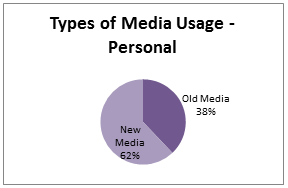Life rarely ever follows fairy tales. People read nice
stories all the time, but the inevitable thought of ‘that’ll never happen to
me’ always creeps in. From a young age we lose the ability to believe in
dreams, and we are told to focus on reality instead. But sometimes putting a
little faith in the improbable, and doing something to give your dreams a little
bit of a kick start, turns out alright. Sometimes it does people good to follow
the advice of a story.
It all started with a book she read. It was about a women
who’d had met her husband at the supermarket, they’d started talking, she’d got
his number and they’d been happy together ever since. Ann-Marie, however, was
newly divorced and shy, and didn’t think that anything like that would ever
happen to her. She thought those inevitable thoughts of ‘that’ll never happen
to me’ and carried on with her life. Something about that story must have stuck
with her though, because a couple of weeks later it sparked her to do something
that she never would have thought she’d do.
She was wandering through the aisles of Aldi one day, just doing
her shopping, when she saw a man she’d been friends with years ago. Years
later, now both divorced, they saw each other there, had a quick chat, and
parted ways, just like you would with any other old acquaintance. For some
reason, however, Ann-Marie couldn’t get that story out of her head. She went home thinking about it, about Ed her
old friend, and about her. A few days passed, but the thought was still there. So
taking a big dose of courage and the advice of a story, she decided to get his
number.
Now, the chances of her running into him again at Aldi were
pretty slim. So Ann-Marie decided to do something a bit more cunning: she
looked up his name in the electoral role. There were only two E. Cavanough’s in
there, but she wasn’t brave enough to dial the numbers just yet. So she hopped
in her car and drove past the two houses, trying to decide which one was his. By
the time she got back home she had a pretty good idea of which one belonged to
Ed, but she still wasn’t sure. It seemed so silly, and so improbable, that
anything would come out of it. That night she talked to her daughter about it,
sounding like a giggling schoolgirl when she asked “Do you remember Ed?” She
told her daughter about what had happened, and what she’d done. Her daughter,
while shocked that her sweet, shy little mother would do anything like that,
told her to go for it. “What’s the worst that could happen, mum?” she asked.
Ann-Marie chose not to answer that question with the rising amount of fear and
doubts filling her head, and instead decided to sleep on it and do something in
the morning.
The next day she somehow found herself sitting in front of
the phone, dialling the number of a certain E. Cavanough. “If this isn’t him”,
she told herself, “I’ll give up and forget about the whole thing.” Heart
beating fast, she pressed dial and waited. Eventually a somewhat familiar voice
answered with a “hello?” and everything froze. She asked if this was Ed, and
did he remember her. They’d met in Aldi the other day, yes? How was he? They
talked for a little while, and then Ann-Marie did something she never would’ve
thought she’d do: she asked him on a date.
Shocked by everything she’d had the courage to do, Ann-Marie
met Ed the met the next day for coffee. They talked some more, and it turned
out that even after all the years between seeing each other they still had a
lot in common, and liked being around
each other. Ann-Marie told Ed about the story she’d read, and how it had
inspired her to track him down. They decided to meet up again, and after a few
weeks they were going out.
A year later they got married, and pretty much lived happily
ever after. All of this was because she had decided to believe in something
slightly ridiculous, and put some faith in what was a little bit of a fairy
tale. Instead of sticking to the belief that ‘nothing like that will ever
happen to me’, Ann-Maire made something improbable happen, and it paid off. So
maybe there is some truth in fairy tales, and good things don’t just happen in
books. Sometimes spicing up reality with a little sprinkling hope in the
improbable turns out for good.





